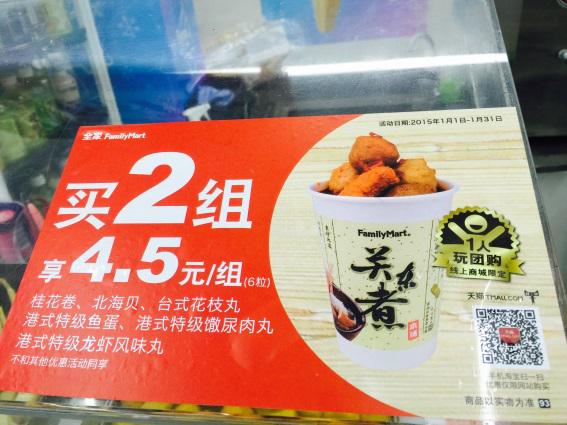It was lunchtime during a weekday last week, I walked into a FamilyMart Convenience Store nearby my office in Shanghai, which is a renowned Japanese-owned chain of convenience stores that can be found throughout major cities in China. A promotional message near the cashier counter caught my attention. It was a promotional offer of purchasing 12 meat balls in order to enjoy a discounted price of RMB9 (around US$1.5 or Euro 1). I found the price attractive and asked the shop assistant for it. However, I was told that this was only an offer at TMall (the most comprehensive online ecommerce website in China). I can only enjoy the offer and get the food by presenting the verification code received from the Tmall website. Out of curiosity, I asked the shop assistant if the promotion was well received or not. Not to my surprise, the shop assistant told me that it was not a successful promotional program as it was too inconvenient for consumers.

This promotion can be treated as an example of “O2O”, which is a terminology invented in China to describe online to offline or offline to online. O2O projects have attracted lots of investment from venture capitalists in 2014 as these projects are believed to be trendy. However, is it applicable to all industries and circumstances?
As marketers, perhaps we should revisit the basics. Thinking about buying low-cost items like meat balls at a convenience store which is more or less an impulse purchase, who would bother going through the trouble to purchase online to enjoy a small discount?
Before launching any O2O campaign, think more before acting. It is worthwhile to revisit the basics of consumer needs and purchase behavior.
Top ranked products that are environmentally friendly (from our current website)






